Last updated: April 12, 2023
Article
The Battle of Mill Springs: The Civil War Divides a Border State (Teaching with Historic Places)
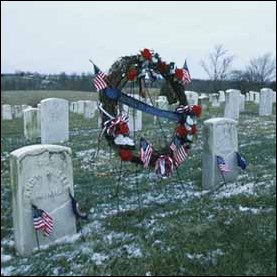
This lesson is part of the National Park Service’s Teaching with Historic Places (TwHP) program.
It was just after midnight on January 19, 1862, when Confederate troops started towards the Union army camped near the Kentucky hamlet of Logan's Cross Roads. Rain, sleet and fog filled the night, creating conditions so miserable that a Union soldier later noted, "If we had known...[the Confederates had] turned out of their comfortable tents and dry blankets and for the next six weary hours were sloshing along in the mud and storm and darkness, we could have much enjoyed the contemplation of their physical and spiritual condition. It was always some comfort to the soldier on a night such as this to think that his enemy over there, was at least as cold and wretched as he himself was."
Yet both sides were ready to fight because they realized the strategic importance of Kentucky. Kentucky was the gateway to the Confederacy's strongholds in the interior South, especially in Tennessee, and so control of the state would profoundly affect the outcome of the Civil War. As Abraham Lincoln put it, "I hope to have God on my side, but I must have Kentucky."
Largely forgotten today, and overshadowed in its own time by battles at Shiloh and Fort Donelson, Mill Springs was the first significant Union victory of the Civil War. It proved crucial to Union control of Kentucky and the interior South and shaped later developments in the war. Mill Springs was important for another reason: it revealed the deep divisions that existed throughout the border states.
About This Lesson
This lesson is based on the National Register of Historic Places registration file, "Mill Springs Battlefield" (with photographs), and other historical documents. It was made possible by the National Park Service's American Battlefield Protection Program. The lesson was written by William P. Turpen, a member of the Board of Directors of the Mill Springs Battlefield Association, and Ronald Nicholas, former Administrator for the Mill Springs Battlefield. TwHP is sponsored, in part, by the Cultural Resources Training Initiative and Parks as Classrooms programs of the National Park Service. This lesson is one in a series that brings the important stories of historic places into the classrooms across the country.
Where it fits into the curriculum
Topics: This lesson could be used in teaching units on the Civil War or on the commemoration of wars.
Time period: 1860s-1905
United States History Standards for Grades 5-12
The Battle of Mill Springs: The Civil War Divides a Border State relates to the following National Standards for History:
Era 5: Civil War and Reconstruction (1850-1877)
-
Standard 1A- The student understands how the North and South differed and how politics and ideologies led to the Civil War.
-
Standard 2A- The student understands how the resources of the Union and Confederacy affected the course of the war.
-
Standard 2B- The student understands the social experience of the war on the battlefield and homefront.
Curriculum Standards for Social Studies
National Council for the Social Studies
The Battle of Mill Springs: The Civil War Divides a Border State
relates to the following Social Studies Standards:
Theme II: Time, Continuity and Change
- Standard C - The student identifies and describes selected historical periods and patterns of change within and across cultures, such as the rise of civilizations, the development of transportation systems, the growth and breakdown of colonial systems, and others.
Theme V: Individuals, Groups, and Institutions
- Standard E - The student identifies and describes examples of tensions between belief systems and government policies and laws.
Theme VI: Power, Authority, and Governance
- Standard F - The student explains conditions, actions, and motivations that contribute to conflict an cooperation within and among nations.
Theme X: Civic Ideals, and Practices
-
Standard E - The student explains and analyzes various forms of citizen action that influence public policy decisions.
Objectives for students
1) To understand why the Civil War caused such deep divisions in border states.
2) To explain the strategic significance of Kentucky to the Union and Confederacy.
3) To examine why and how those killed in battle came to be honored by the local community.
4) To assess how the war dead are honored in their own community.
Materials for students
The materials listed below either can be used directly on the computer or can be printed out, photocopied, and distributed to students. The maps, photos, drawing appear twice: in a low-resolution version with associated questions and alone in a larger, high-resolution version.
1) two maps of Kentucky and the surrounding region;
2) three readings about the battle and local commemoration of the dead;
3) a drawing of the death of General Zollicoffer; and
4) three photos of the battlefield and the Mill Springs National Cemetery today.
Visiting the Site
The Mill Springs Battlefield is located nine miles west of Somerset and one mile south of Nancy (Logan's Cross Roads), Kentucky. It includes the place of Zollicoffer's death and the mass graves of the Confederates. Visitors may also visit the Mill Springs National Cemetery, where the Union dead are buried. Self-guided driving tour brochures of the battlefield are available and guided tours can be arranged. For additional information contact, Mill Springs Battlefield Association, P.O. Box 810, Somerset KY 42501.
Getting Started
Inquiry Question
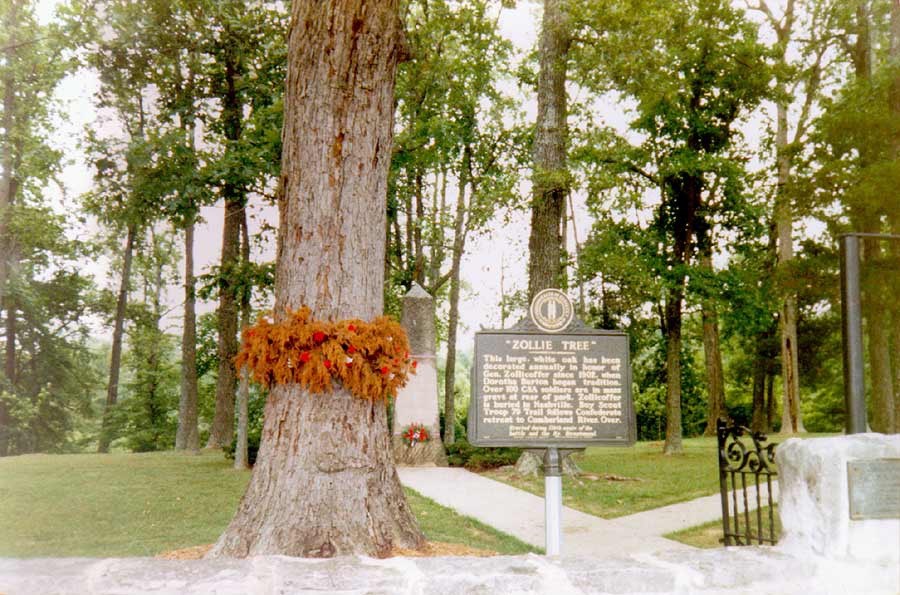
Why might this tree be significant? Why would people put a commemorative, historical marker by a tree?
Setting the Stage
In Kentucky, there was sympathy for both sides of the issue of slavery. Its location meant its citizens had contact with people from across the U.S., especially those traveling along the Ohio River. Approximately 225,000 people were enslaved in Kentucky, but there were also many people who actively supported the Underground Railroad.
During the years leading up to the Civil War, Kentucky had produced men like Henry Clay, the "Great Compromiser," and John Crittenden, author of the Crittenden Compromise. Both of them, along with many others, worked to keep their state and the country together, but that goal seemed to be slipping away as the 1860s began.
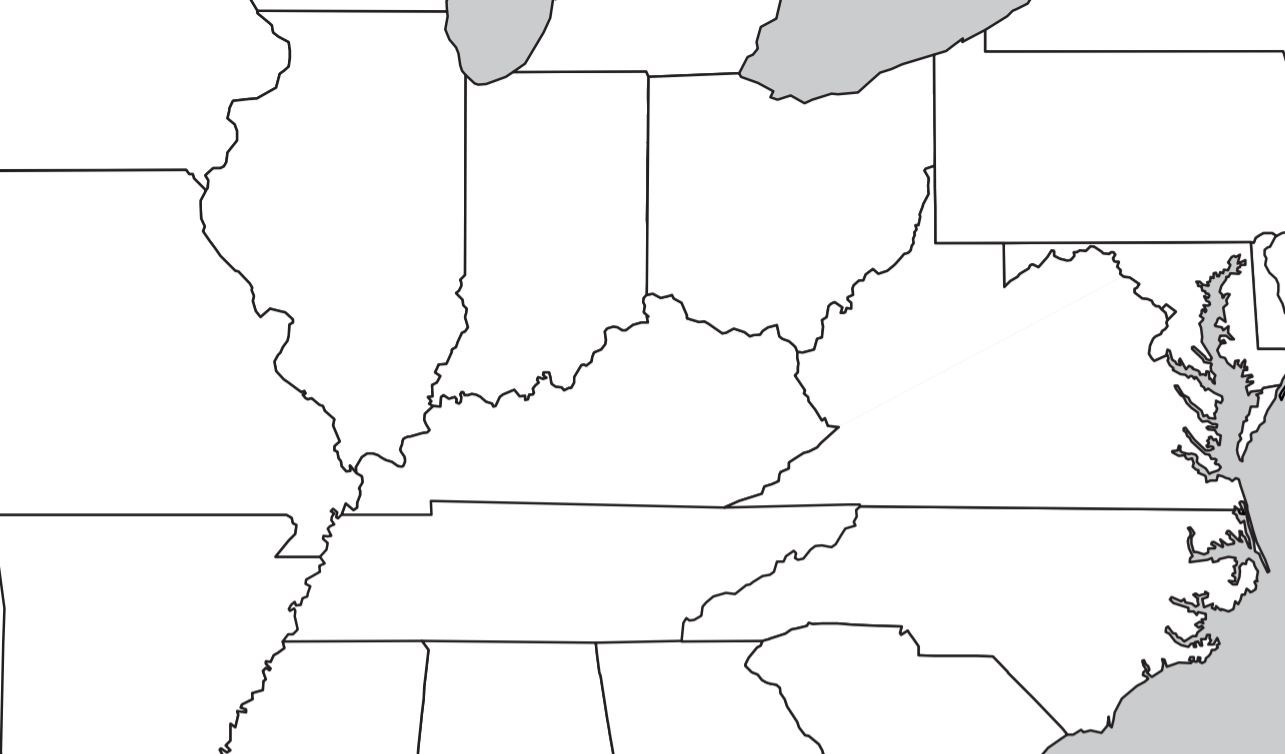
Questions for Map 1
1. To begin to understand why Kentucky found itself right in the middle, both literally and figuratively, of the Civil War, locate and label the state on Map 1. Next label all the states which border on it. (Keep in mind that West Virginia did not become a state until 1863.)
2. Which of Kentucky's neighbors supported the Union? Which supported the Confederacy?
3. Why would these states care which side controlled Kentucky?
Locating the Site
Map 2: Kentucky and the surrounding region.
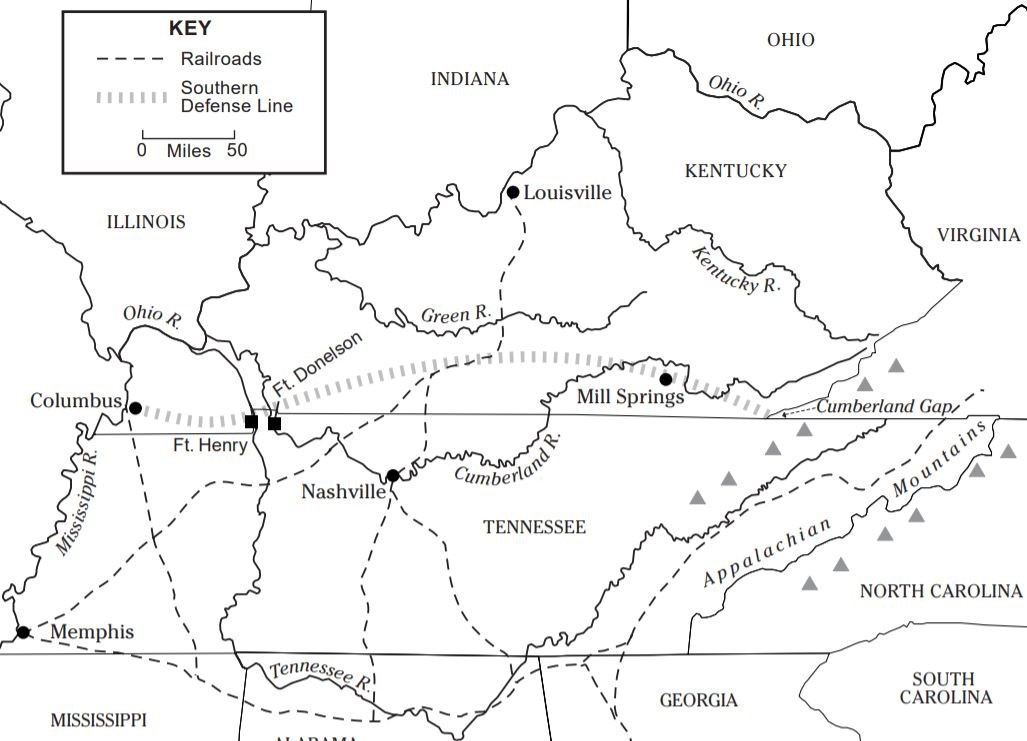
The "Southern defense line" marked on the map was not an unbroken string of fortifications; instead, Confederate forces had established a series of positions they believed would help them fight the Union Army.
Questions for Map 2
1. What transportation routes ran through the region? How would the location of these routes affect the importance of southern Kentucky?
2. From its name and location, what do you think the Cumberland Gap is? Why would both the Union and the Confederacy want to control it?
3. The Confederates chose to establish a key position at Mill Springs, which sat on a high bluff. What places or features would it have had responsibility for protecting?
Determining the Facts
Reading 1: Kentucky's Importance
The Civil War divided few states as deeply as it did Kentucky. Some residents, citing the state's history of supporting compromise and nationalism, wanted to remain with the Union. Others favored the Confederacy; they concentrated on the state's ties to the South through culture--most importantly, by slavery--and through family. In an attempt to keep these divisions from widening further, the state legislature declared in May 1861, a month after the firing on Fort Sumter, that it had decided to "occupy a position of strict neutrality."
Those who wanted to stay out of the growing conflict failed. Both the Union and the Confederacy were trying to convince residents to support their side, for each understood how the state could help in the war. Control of Kentucky would assist in the defense of other crucial territory and provide access to key transportation routes. It had the third-largest white population of all the slave-holding states, so it contained a large number of potential soldiers, and it produced wheat and livestock, supplies both sides would need. Recognizing these factors, President Lincoln told a friend, "I think to lose Kentucky is nearly the same as to lose the whole game."
Unionists gradually came to dominate the state. Elections in May (for Congress) and August (for the state legislature) both ended with significant victories for men who favored the North. Many white Kentuckians who had remained uncertain which side to support began to sympathize with the Union in September 1861, when Confederate Gen. Leonidas Polk took control of Columbus, a railroad junction that sat at the foot of a bluff overlooking the Mississippi River. Although Union forces under the command of U.S. Grant soon occupied two other towns in the state, General Polk was the first to move, which created sympathy for the North.
Even as Kentucky tilted towards the U.S., however, it remained far from united. Each side recruited troops from the state, and these enlistments caused splits that ran through families. All but one of Mary Todd Lincoln's seven brothers and half-brothers, for example, fought against the Union that her husband was trying to preserve.
The following excerpts demonstrate how both the Union and the Confederacy attempted to win the loyalty of the citizens of Kentucky. The first is from a speech given by Col. Curren Pope, commander of the Seventh Kentucky Infantry US, at a ceremony in Louisville in October 1861. The second is from a proclamation issued by Confederate Gen. Felix Zollicoffer, a former newspaper editor and Congressman from Tennessee, to the citizens of southeastern Kentucky in December, 1861. In the fall of 1861 Zollicoffer had crossed the Cumberland Gap into Kentucky with 6,000 men, then encamped near Mill Springs.
Colonel Pope:
We behold emblazoned upon its [the United States flag's] bright folds the same stars and stripes which the eyes of Washington were accustomed to look upon, and we rejoice with joy unspeakable that it is still this day the consecrated flag of our Union. It has streamed in triumph at the mast-head of our ships, and in many a bloody field has cheered the American armies on to victory. It has waved in every breeze on land and upon the sea, and in the strong hands of our fathers who bore it aloft, it has never, lo, never dishonored. Around it have clustered the dearest hopes of every friend of human liberty in every clime, and who doubts the last shriek of freedom will rend the skies, if it shall fall forever....[t]hough others may hate and curse the land that gave them birth, the brave and loyal sons of Kentucky will never strike with parricidal hands the State that has nutured them. Sooner may the battle-field run purple with our blood, and we fall, if fall we must, in civil strife, wrapping as a winding sheet these spangled colors around us and breathing out our last sighs for our country's glory.
General Zollicoffer:
To the People of Southeastern Kentucky:
The brigade I have the honor to command is here for no purpose of war upon Kentuckians, but to repel those Northern hordes who, with arms in their hands, are attempting the subjugation of a sister Southern State....We have come to open again your rivers, to restore the ancient markets for your produce, and thereby to return to you the accustomed value of your lands and labor....We come to take you by the hand as heretofore--as friends and brothers. Their government has laid heavy taxes on you to carry on this unnatural war, one object of which is openly avowed to be to set at liberty your slaves, and the ensuing steps in which will be to put arms in their hands and give them political and social equality with yourselves. We saw these things in the beginning, and are offering our heart's blood to avert those dreadful evils which we saw the abolition leaders had deliberately planned for the South.
How long will Kentuckians close their eyes to the contemplated ruin of their present structure of society? How long will they continue to raise their arms against brothers of the South struggling for those rights and for that independence common to us all, and which was guaranteed to all by the Constitution of 1787?...We have broken their columns in almost every conflict. We have early acquired a prestige of success which has stricken terror into the Northern heart. Their "grand armies" have been held in check by comparatively few but stern hearted men, and now they would invoke Kentucky valor to aid them in beating down the true sons of the South who have stood the shock, and in bringing common ruin upon Kentucky and her kindred people. Will you play this unnatural part, Kentuckians? Heaven forbid! The memories of the past forbid! The honor of your wives and daughters, your past renown, and the fair name of your posterity forbid that you should strike for Lincoln and the abolition of slavery against those struggling for the rights and independence of your kindred race.
Strike with us for independence and the preservation of your property, and those Northern invaders of your soil will soon be driven across the Ohio.
Questions for Reading 1
1. Why were white residents of Kentucky so divided over what to do when the Civil War began?
2. Why did both the Union and the Confederacy want Kentucky on their side?
3. What arguments does Pope use to side with the North? What fears does he raise? How does he describe Confederates?
4. What arguments does Zollicoffer use to induce Kentuckians to side with the South? What fears does he raise? How does he describe Northerners?
Reading 1 was compiled from a letter written by Abraham Lincoln and published by William H. Townsend, ed., Lincoln and the Bluegrass, (Lexington: University of Kentucky Press, 1955, 254); and from The War of Rebellion: Official Records of the Union and Confederate Armies, Series 1, Vol 7, (Washington: Government Printing Office, 1882), 787.
Determining the Facts
Reading 2: The Battle of Mill Springs
It was just after midnight on January 19, 1862, when 4,000 Confederate troops at Beech Grove started a nine-mile slog towards a Union army camped at Logan's Cross Roads. Fog shrouded the heavily wooded hills, and a cold, sleeting rain washed down the ravines that sliced across the landscape. A Union soldier later noted, "[i]f we had known...[the Confederates had] turned out of their comfortable tents and dry blankets and for the next six weary hours were sloshing along in the mud and storm and darkness, we could have much enjoyed the contemplation of their physical and spiritual condition. It was always some comfort to the soldier on a night such as this to think that his enemy over there, was at least as cold and wretched as he himself was."1
The South had decided to attack the Union Army in order to protect the defensive line it had set up across southern Kentucky. Maj. Gen. George B. Crittenden, who commanded the Confederate Army in this part of the country, had learned that Federal forces under Maj. Gen. George Thomas were coming together at Logan's Cross Roads. Crittenden and his commanders decided their best strategy was to strike now, before additional Union troops arrived; if they waited, the Union would soon attack the defenses the South had set up near the community of Mill Springs. The Confederates desperately needed to hold their line, because a loss would allow the North to gain control of the Cumberland Gap, the main route into southwest Virginia, and have access to the heart of Tennessee.
After six hours of marching in the dark, the Confederate troops encountered Federal pickets and the Battle of Mill Springs began. For the next four hours fighting ranged across hilly farmland that still retained many patches of woods. Ravines cut across the battlefield, impeding the cavalry and artillery of both sides. This terrain was familiar to soldiers on each side, for both North and South included units made up of men from Kentucky.
At the start of fighting, the Southern troops drove their opponents back. After about an hour, however, the battle began to stabilize. More Union forces arrived, and it became difficult to see as black powder in the rifles produced smoke that mixed with the fog. The weather gradually had another effect on the Confederates, who used an old type of rifle that needed a spark to ignite its black powder, which lay exposed in an open pan. "The rain was descending in torrents and our flint lock muskets were in bad condition; not one in three would fire," wrote one Southern soldier. "We...did the best we could with our old flint locks. Mine went off once during the action, and although I wiped the 'pan' and primed a dozen times it would do so no more."2
It was in this confusion that General Zollicoffer rode up to the 19th Tennessee CSA, who held the Confederate center. He ordered them to cease fire, as he was convinced that they were shooting at other Southern units. The General then advanced toward the unit being fired on and began speaking with another officer, whom he ordered also to cease fire. Neither recognized the other's face, and both men wore rubberized canvas raincoats that made it impossible to see a uniform. The other officer had turned away to follow his orders when one of Zollicoffer's aides rode up and shouted for the General to get away--these were the enemy's troops! Zollicoffer had been mistaken: the 19th Tennessee had been firing at the 4th Kentucky US, who still stood close enough to hear the warning. They opened fire, and Zollicoffer and his aide were killed instantly.
Even after Zollicoffer's death, fighting continued for at least two more hours. The Confederates mounted one more significant attack, in which they advanced but were unable to break the Union lines. Then the tide of the battle turned against the Confederates, particularly after the 9th Ohio made one of the first and most effective bayonet charges of the Civil War. They broke the Confederate left and caused the entire army to retreat in confusion. The Federal forces pursued, but rear guard action by some Southern units slowed the Union enough to allow the Confederates to reach their fortified camps, nine miles to the rear, as night fell.
During the night, as the Federals prepared to attack the camp at dawn, the beaten Confederates retreated hastily across the Cumberland River. When the Union army approached in the morning, they found their opponents were gone, having abandoned their artillery, wagons, horses, food, and most of their personal possessions. In a scene repeated frequently on both sides throughout the war, Union troops then plundered the enemy's camp. "We have taken some of the nicest clothing I ever saw, broadcloth coats worth from five to twenty dollars a piece. I got a satin vest worth five dollars, a shirt worth a dollar and a half, and a silver-handled stiletto too," wrote one soldier from Ohio to his father.3
The South lost more than men at the Battle of Mill Springs. The defeat caused their defense line to collapse in eastern Kentucky, leaving the region itself under Federal control and eastern Tennessee open to invasion. The subsequent losses of Forts Henry and Donelson, both just over the border into Tennessee, forced all Confederate forces to retreat out of the state. Though the South would try to retake Kentucky later in 1862, the failure of this effort meant that the state remained firmly in control of the Union for the rest of the Civil War.
Questions for Reading 2
1. Describe the conditions after fighting had gone on for about an hour.
2. How did the weather contribute to Zollicoffer's death?
3. Do you think his death might have influenced the outcome of the battle? Why?
4. Why would the Union soldier write home about plundering the Confederate camp? What can you infer about his attitudes and beliefs?
1Judson W. Bishop, The Story of a Regiment -- Service of the Second Regiment, Minnesota Veteran Volunteer Infantry, (n.p., 1890) 38.
2James L. Cooper, "James L. Cooper's Diary," The Confederate Veteran 33, 16.
1James Baker to his father, 21 January 1862, published in History of Newaygo Co. Michigan Civil War Veterans, 80.
Determining the Facts
Reading 3: Remembering Those Who Died at Mill Springs
After fighting had ended, the Union forces had to take care of the 55 Federals and 148 Confederates who had been killed. The U.S. War Department had issued orders on how Union soldiers should be buried, but officers at Mill Springs and elsewhere had trouble following them. The orders did not provide land for such cemeteries, and the lack of an official system often made identifying the bodies difficult. At Mill Springs, the Union ending up placing its dead in individual graves, but many of the men were apparently mis- or unidentified.
The situation was complicated also because there was no official policy about how to treat dead Confederates. Following what became a common practice on both sides, the Union placed the dead of their opponents into a number of mass graves. These graves were so shallow, however, that within a few days local people later had to reinter them. Zollicoffer's body, however, was returned to the Confederates and buried in Tennessee.
At the end of 1862 Congress established 12 national cemeteries, including one at Mill Springs, for "soldiers who shall die in the service of the country." But the complications of the war meant little happened to fulfill this policy until 1867, when Congress passed comprehensive legislation that led to the development of formal burial sites. That same year William Logan, for whom Logan's Crossroads was named, donated the land for the Mill Springs National Cemetery; its official dedication occurred June 15, 1881. Although only Union soldiers were supposed to be interred there, local residents have said that since men from both sides were buried together just after the battle, some of those moved into the national cemetery were Confederates. Each year on Decoration Day (now known as Memorial Day), flowers were laid by each gravestone as part of ceremonies commemorating the dead.
In the early 1900s, a local 10-year-old girl named Dorotha Burton decided to honor the Confederate soldiers killed at the Battle of Mill Springs. The Confederates had remained in their mass grave near a white oak known locally as the "Zollie Tree" because General Zollicoffer's body had been placed there after he had been killed. With the help of her father, Dorotha cleared the area around the mass grave and decorated the Zollie Tree with an evergreen wreath. In 1904 her custom came to the attention of the United Confederate Veterans Association, who promised to raise funds for a more formal monument to the Confederate soldiers. In 1910, on land donated by a Union veteran and his wife, a member of the Logan family, an obelisk and a stone marker for the mass grave was unveiled.
In the 1930s, the area around the grave and the "Zollie Tree" became known as Zollicoffer Park Cemetery. For the next 60 years, Dorotha Burton Hudson, her family, and local volunteers, such as the 4th KY Volunteer Infantry US reenactment group, maintained this area. In the 1970s the Kentucky Department of Parks took over the cemetery, and in 1992 the Mill Springs Battlefield Association was formed to protect both the battlefield area and the Confederate cemetery. A 1995 storm destroyed the Zollie Tree, but on Memorial Day, 1996, a seedling from the old tree was planted in its place.
Questions for Reading 3
1. Why do you think the United States ordered that only Union soldiers should be buried in the Mill Springs National Cemetery?
2. How long after the Civil War was it that Dorotha Burton decided to decorate the Zollie tree?
3. Why do you think it was not until the turn of the 20th century that Kentuckians began decorating the Zollie Tree?
4. What other developments were occurring in American society and politics around the turn of the 20th century that might have made people in the state more sympathetic towards the Confederacy and the causes it represented?
Reading 3 was compiled from Ron Nicholas, "Mill Springs: 1st Battle for Kentucky," Kentucky Civil War Journal 1, No. 4 (January 1997), 7-16.
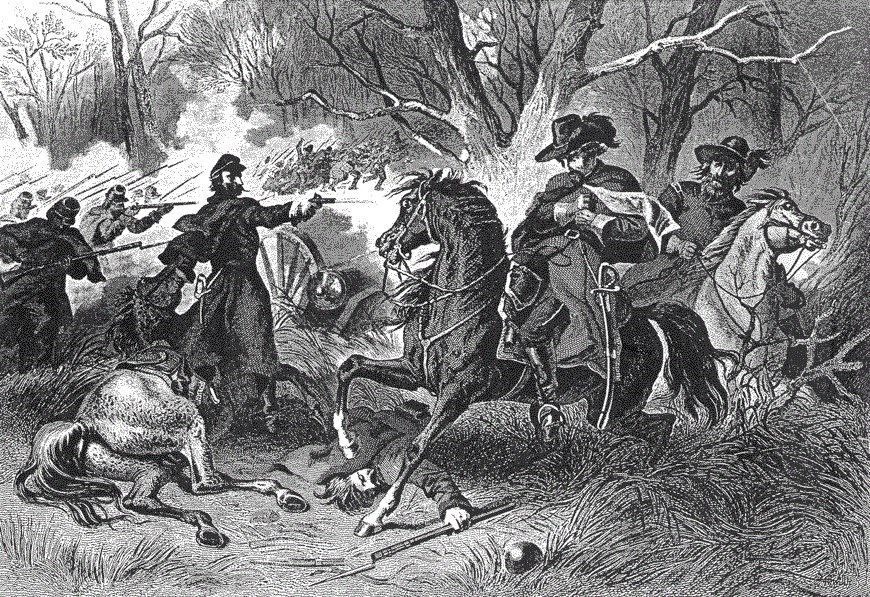
![]()
While the Civil War was the first war to be extensively photographed, newspapers of the time did not have the technology to print pictures. They relied on the drawings by artists that were often based on photographs to give their readers an opportunity to "see" the battle's action. There were no photos taken of the battlefield at Mill Springs, but there were artists' renderings to show some of the main events during the battle.
Questions for Drawing 1
1. Based on the information in Reading 2, does this portrayal appear to be accurate? Why or why not?
2. Does this view seem more likely to have appeared in a Union or a Confederate newspaper? Why?
Visual Evidence
Photo 1: The Mill Springs Battlefield today.
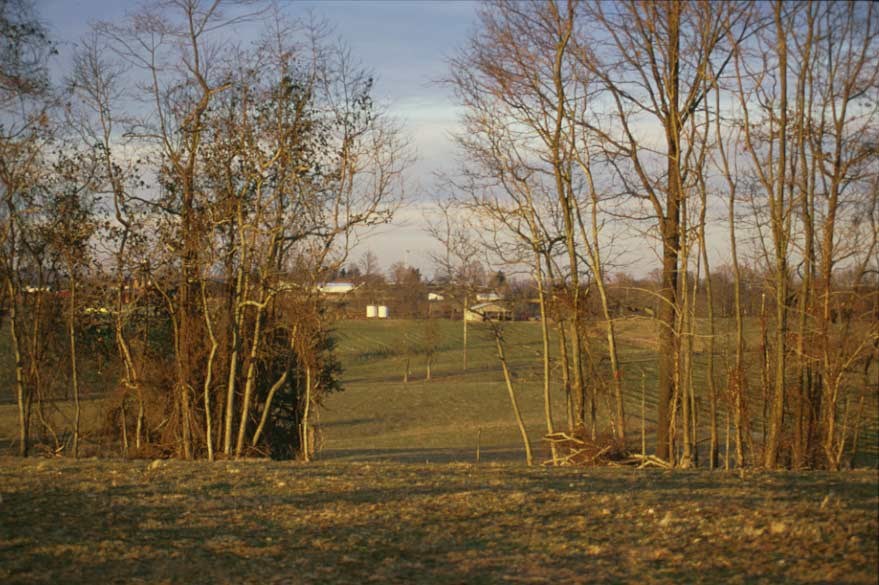
Question for Photo 1
Photo 1 shows a portion of the battlefield now preserved in Mill Springs Battlefield Park.
1. Compare the photograph with the descriptions provided in Reading 2. How representative of the terrain on which the battle was fought does this area seem? Explain your answer.
Visual Evidence
Photo 2: The Zollie Tree, 1994.

Photo 3: Mill Springs National Cemetery.
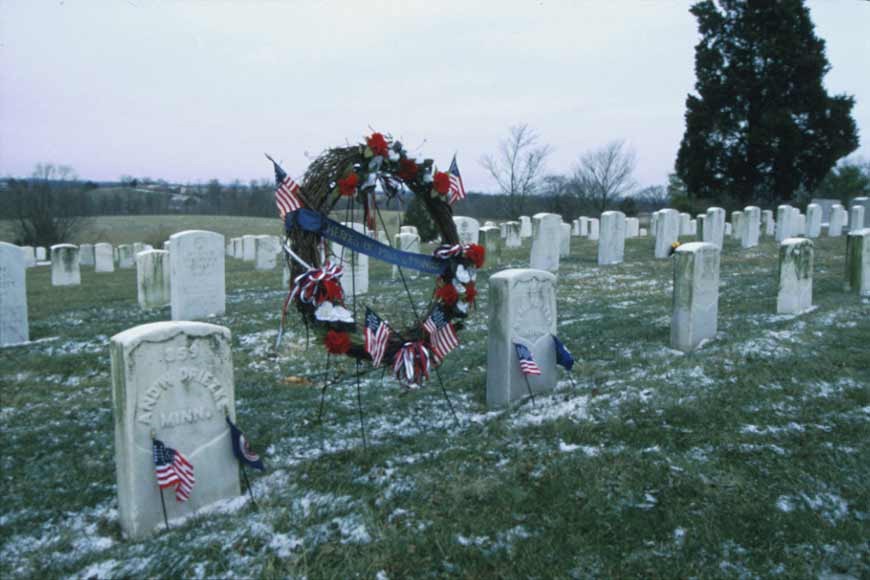
Questions for Photos 2 and 3
1. Describe the scenes in each photograph.
2. What are the differences between the two ways of commemorating the Civil War dead?
Putting It All Together
The following activities will help students better understand the forces that led up to the Battle of Mill Springs and the ways in which communities, including their own, commemorate those killed during war.
Activity 1: Choosing Sides
Give students the following two documents. Have students read the documents in small groups and then discuss the analysis questions, either in groups or as a class. Then, hold a class discussion about the similarities and differences between the two documents. What do the two documents show about divisions among white Kentuckians?
Document 1
The following document is from the diary of Lizzie Hardin, a young white woman living in Kentucky during the Civil War.
I had been born and reared in Kentucky, a true believer in her state motto, “United we stand, divided we fall.” Her seal, with its two gentlemen of the old school, one in white knee breeches, the other in black, holding on to each other’s hands, with a most deadly grip, was wont to awaken in me the most patriotic emotions. The words “Star Spangled Banner,” “American Eagle,” “Glorious Union” were the “Open Sesame” of my heart. And I honestly believed when “E Pluribus Unum” breathed his last, the world would close down and suspend payment.
And yet, strange as it may seem, my love for the Union arose only from an idea that it was beneficial to the South. I never doubted the will but the power of the North to injure us. Yankees politically and personally (and I called all men Yankees who were born North of Mason’s and Dixon’s line) were an abomination in my sight. Even in my early childhood I had shocked my more believing companions by calling the Pilgrim Fathers a “humbug.” Thus, at first, it was hard to decide which side had the most of justice and reason. Why, I asked can we not wait for an overt act upon the part of Lincoln? What are we suffering that we have not suffered for twenty years? I do not know that I could enumerate all the arguments which first convinced me that South Carolina was right. I think it was more a mere statement of facts than arguments. For instance, I heard now for the first time of the Personal Liberty Bills which had been in force in several Northern states for years. This argues great political ignorance, and yet I do not believe mine was greater than that of many other persons at the same time—and they were not always persons of my own sex, either. [Personal Liberty Laws, which existed in ten Northern states, prevented the re-enslavement of free Black people.]
Questions for Document 1
- What does Lizzie mean by “South Carolina was right”? From this statement, which side do you think she supported?
- What values did Lizzie learn as a child in Kentucky?
- What were the Personal Liberty Bills? What was Lizzie’s opinion of them?
- What was Lizzie’s opinion of “Yankees”?
- Why do you think Lizzie chose to support that side in the Civil War?
G. Glenn Clift, ed., The Private War of Lizzie Hardin: A Kentucky Confederate Girl’s Diary of the Civil War in Kentucky, Virginia, Tennessee, Alabama, and Georgia (Frankfort, KY: The Kentucky Historical Society, 1963), 3-4.
Document 2
The following document is from the diary of John W. Tuttle, a Kentuckian who served as a captain in the U.S. Army during the Civil War. This excerpt is from 1861.
But I must return and narrate one little incident of the march which as a display of practical wit is worthy of remembrance. When within about 3 miles of the Ky. River bridge we met a wagon with a man in it who shouted “hurrah for Jeff. Davis!” [Jefferson Davis was the president of the Confederate States of America.] The men supposing he was in fun took no notice of it but upon a repetition of the taunt told him to hush but the more they told him to hush the louder he bellowed “hurrah for Jeff. Davis. The men who were greatly worried by the march and the load they were carrying became irritated beyond endurance and called out to some of their companions who were behind to “stop that damned rascal!” The wagoner who had his horses in a trot paid no attention to the peremptory orders of the soldiers as he swept past them to “halt!” while the chap in the wagon continued screaming at the top of his voice “hurrah for Jeff. Davis!.” The wagon had gone on in this manner about two hundred yards when it was stopped by two soldiers who planted themselves before it at “charge bayonets.” They then told the gentleman of Jeff. Davis proclivities to get out. That worthy only cried with still greater vehemence, “hurrah for Jeff. Davis!” Two men loaded their guns and told him if he said it again they would “make daylight shin through him” but nothing daunted, he repeated without the slightest abatement in emphasis “hurrah for Jeff. Davis!” Our men finding they could not stop his noise by threats were for sometime somewhat at loss what course to take in the matter but after consulting a moment they fixed their bayonets lifted him out of the wagon loaded him with knapsacks and marched him on towards camp. Col. Bramlette passed them while our hero was struggling along under his weighty load and laughed heartily at the affair remarking that that was the first time he had ever known a Secessionist made useful. They made a packhorse of him as far as the bridge and there released him.
Questions for Document 2
- According to John, why is this event “worthy of remembrance”?
- Why do you think the man kept shouting “hurrah for Jeff. Davis”?
- What did the Union soldiers do to him?
- Why do you think John refers to the man as “our hero”?
John W. Tuttle diary, 1860-1867, University of Kentucky Special Collections, 62.
Activity 2: Soldiers' View
Weather and weaponry played an important part in the outcome of the Battle of Mill Springs. Have students review Reading 2, marking all the references to weather and weaponry. Have students assume the role of a journalist who is observing Mill Springs towards the end of the battle, when it becomes clear that the battle is becoming a Union victory. Students should write a short newspaper article about what they witnessed. They should describe what the conditions were like during the Battle of Mill Springs, including weather, terrain, and the misfiring weapons, and soldiers' reaction to these developments.
Activity 3: Community Action
How are wars, and the people who fought in them, remembered in the local community? Have students find a local war memorial and describe it, including a physical description, what it says, and where it is located. Students may also want to research the history of this memorial. Libraries and local historical societies are good places to find this information.
The Battle of Mill Springs--Supplementary Resources
The Battle of Mill Springs: The Civil War Divides a Border State examines the history of one site and how it reflected divisions that ran across the United States. Below are materials for further exploration of the subjects this lesson considers.
The Civil War in Kentucky
The Civil War ranged across Kentucky, and this guide, compiled by the West Kentucky Corporation, provides maps to and photographs of more than 60 sites where fighting took place.
National Park Service Civil War Website
Visit the official National Park Service Civil War Web Site. This website offers the current generation of Americans an opportunity to know, discuss, and commemorate this country's greatest national crisis, while at the same time exploring its enduring relevance in the present. Also included are links to Civil War Parks, NPS education programs, and much more.
National Cemetery Administration
The Administration the section of the Department of Veterans' Affairs that maintains national and military cemteries, including the one at Mill Springs. Its Web site provides a list of all national cemeteries, as well as other information about how the U.S. has honored those who have died in battle.
